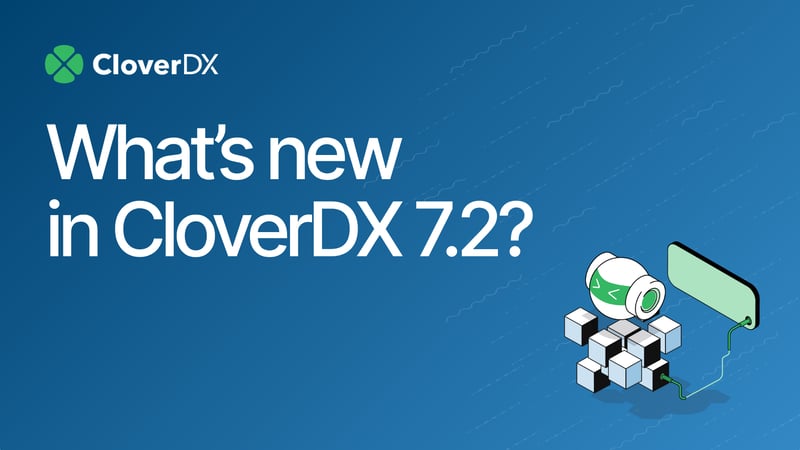Data ingestion and ETL both refer to the process of preparing data to be stored in a clean production environment. Yet, there are clear distinctions between the two.
In the following article, we'll define the two processes, set out the challenges and benefits, and explain how you can revamp your ETL and data ingestion processes with the right platform.
Download the article as a pdf
Share it with colleagues. Print it as a booklet. Read it on the plane.
What is the difference between data ingestion and ETL?
To summarize the two:
Data ingestion is the process of connecting a wide variety of data structures into where it needs to be in a given required format and quality. This may be a storage medium or application for further processing. It's an exercise of repeatedly pulling in data from sources typically not associated with the target application by mapping the alien data and organizing it into an internally accepted structure.
What is data ingestion? This clip is from our webinar on Data Ingestion into S3, Azure Blob, Redshift, Snowflake: What Are Your Options?
/2021-10-26_01%20Data%20ingestion%20into%20cloud%20(821%205079%204182).jpg?width=1920&name=2021-10-26_01%20Data%20ingestion%20into%20cloud%20(821%205079%204182).jpg)
ETL stands for extract, transform and load and is used to synthesize data for long-term use into data warehouses or data lake structures. It's traditionally applied on known, pre-planned sources to organize and aggregate it into one of these well-known data structures for traditional business intelligence and reporting.
The focus of data ingestion is to get data into any systems (storage and/or applications) that require data in a particular structure or format for operational use of the data downstream.
The focus of ETL is to transform data into well-defined "rigid" structures optimized for analytics - a data warehouse, or more loosely, a data lake with a warehouse.
Data ingestion is thus a broader term covering any process of adapting incoming data into required formats, structures and quality, while ETL is traditionally more used in conjunction with data warehousing and data lakes.
Here's a short video that explains what ETL is in an accessible, non-technical way.
Data ingestion vs ETL
Now that we have outlined their differences, here's a breakdown of the challenges and benefits to be considered for each process:
Data ingestion
There are a few challenges that can impact the data ingestion layer of the data pipeline:
- The difficult relationship between data quality and business needs. Ensuring the validity of the data so that it conforms to the correct format is vital. When the scale of data is so large, the task becomes costly, and this is where mistakes happen.
- The data ingestion process can be fragmented and can lead to duplicate manual effort. Different departments deal with the problem in their own way and with their own devices, which results in overlap and data drift. In addition, trying to bend data managed by third parties to your own needs can be challenging if the source data is poorly managed and documented.
- Interfacing with external systems can be a problem if the future of the ingestion pipeline is not considered, including the validation of data, which is often a neglected but a crucial part of the process. This can cause delays, increase costs and frustrate end users.
Despite these challenges, when handled correctly data integration can improve your business in many ways. Here are just some of the benefits:
- Data ingestion addresses the need to process huge amounts of unstructured data and is capable of working with a wide range of data formats in a unified way.
- The process can be run on an ad hoc, scheduled, or triggered basis (via API, events, etc) depending on the use case.
- It can provide a data platform to customers that need to ingest data from other systems or sources - for example, providing APIs for data collection and publishing.
- The data ingestion method can be used for real-time, transactional and event-driven applications.
ETL
Here are some of the challenges businesses may face with the ETL process:
- Realtime updates or access to the latest data can be difficult. A data warehouse might be updating once a day or even slower, while certain applications require more frequent or instant access to the very latest data, therefore a warehouse (and thus traditional batch ETL) can't provide such low latency.
- Data quality can also be an issue with ETL. Data entry errors, misspellings, missing values and incorrect dates can arise during the transformation process.
The ETL process has several advantages that go beyond simply extracting, cleaning and delivering data from point A to B. Here are the benefits:
- It enables business intelligence solutions for analytics and decision-making. Structured data is universally understood.
- ETL tools effectively process complex rules and transformations. They simplify and automate the batch mode of working.
- The ETL process is run on a schedule (daily, weekly or monthly) to regularly update a reporting warehouse and minimize disruption.
- High return on investment. ETL tools can be cost-effective for businesses. The International Data Corporation discovered that ETL implementation achieved a five-year median ROI of 112 percent, with an average payback period of 1.6 years.
The CloverDX solution
It's important to make sure data is formatted correctly and prepared for storage in the system of choice. Both the data ingestion and ETL process will help to bring your data pipelines together. But it's easier said than done.
Transforming data into the desired format and storage system brings with it several challenges that can affect data accessibility, analytics, wider business processes and decision-making. So it's important to use the right process for the job.
Fortunately, tools such as CloverDX's Data Integration Platform can help with these data integration and data ingestion challenges. They can erase the border between your data and applications, in turn supporting your business with a data platform that can handle anything from simple ETL tasks to complex data projects.
(Editor's note: page updated as of June 2021)
How Gain Theory streamlines ingestion of thousands of data feeds with CloverDXFind out more about CloverDX and how it can help solve your data ingestion and ETL challenges
By CloverDX
CloverDX is a comprehensive data integration platform that enables organizations to build robust, engineering-led, ETL pipelines, automate data workflows, and manage enterprise data operations.









